[REVIEW] The Wonderful 101 (Wii U)
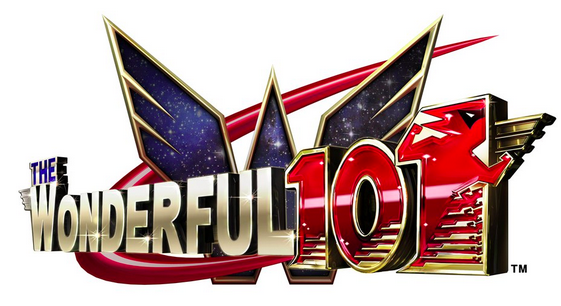
System: Nintendo Wii U
Release Date: September 15th, 2013 (NA), August 25th, 2013 (EU)
Developer: Platinum Games
Publisher: Nintendo
Author: Austin
“They can do it! They can do it! ‘Cuz they’re super sisters and brooooos!”
I encourage those with a passing interest in The Wonderful 101 to start their purchasing deliberation process by experiencing the game’s brilliant theme song. I suspect that anyone who cracks a smile or feels a sense of joy while listening to it will fall well within this game’s intended audience, and if you laughed aloud (like myself) while listening to the lumberjack-esque men sing very silly words written by game director Hideki Kamiya himself, then you can stop reading here and go wait eagerly for the game’s September 15th release date because this game is for you.
But if you’re not a dedicated part of the game’s intended audience and you view the package as a whole, you’ll probably begin to see some pretty substantial blemishes. Not enough of them to ruin the experience, but plenty to leave certain players frustrated and wishing the game had done a few simple things a lot more elegantly.
Read onwards to decide if The Wonderful 101 is for you.
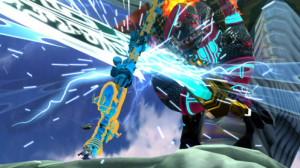
Let’s step back and look at the story of The Wonderful 101 first:
Aliens (called the “GEATHJERK”) are attacking earth, and it’s up to the government-sanctioned band of superheroes known as the “Wonderful 100” (“one double-oh”) to unite up and save all of humanity. This concept gives birth to the game’s main combat mechanic: Using the Wii U Gamepad’s touchscreen or the right thumbstick, you can draw shapes made up of your band of heroes (yes, the lines are literally made out of human beings) and form giant weapons that can be used to fight off the GEATHJERK invasion. Tools like a fist, a gun, a whip, or a sword help you to accomplish a wide variety of tasks and fight a wide variety of enemies. Such is the bulk of the gameplay in The Wonderful 101.
Even compared to the glow of The Wonderful 101’s stylistic vision, the game’s combat remains an admirable high-point. At its best, battles rely heavily on your visual acuity and reflexes, forcing you to recognize a particular enemy attack, figure out the appropriate way to dodge, dodge, and then quickly draw up the weapon you need to deal a suitable amount of damage to the enemy after they’re exposed. Being able to pull off these combinations of moves as quickly as the game requires is immensely satisfying, and this moment-to-moment action is where the game shines.
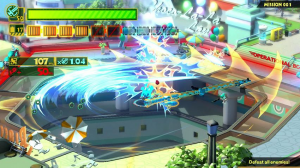
On top of that, though, the designers also did a great job of varying the ways in which enemies are defeated. Too often in these sorts of action games there will be one move combination (e.g. dodge+roll+attack, or block+jump+attack) that can serve as a “key” to unlocking defeat within nearly every foe in the game.
The Wonderful 101 avoids this problem by giving you a plethora of enemies that are defeated in distinctly different ways. It’s true, some of them can be defeated with the generic (but still satisfying) dodge+attack maneuver found in plenty of other games, but just as many require quick use of the whip to pull off armor, or the hammer to break through shields; some enemies move extremely quickly, which means you have to use a time-bomb to slow them down briefly, followed by a quick switch to the fist to deal maximum damage. The variations in enemy defense are numerous and they don’t feel superficial, meaning things rarely get boring.
Additionally, the drawing mechanic is absolutely essential to the pace of the game’s combat: The feeling of quickly drawing a weapon, hitting an enemy, noticing what attack they’re about to do, dodging appropriately, drawing another weapon, and then hitting them again would be severely crippled if you chose weapons with buttons or from a menu. I wouldn’t go as far as to say that the Wii U Gamepad is absolutely necessary here given that drawing with the right thumbstick is equally suitable, but I’m sure it had a hand in inspiring this mechanic in the first place.
Indeed, when The Wonderful 101’s combat works, it works tremendously well.

Unfortunately, it doesn’t always “work”. Often times you’ll be fighting two bigger enemies at once, and keeping track of both of them can become extremely difficult when some of their attacks are so fast that no one could reasonably be expected to have time to identify and dodge without having already been staring directly at the enemy. Which isn’t possible because you’re fighting two enemies and you need to divide your attention.
And unfortunately due to the nature of The Wonderful 101’s combat, it’s not particularly fun unless you’re winning, because the act of dodging and attacking is where the game’s sense of momentum comes from. The game isn’t too hard, but a handful enemy attacks feel distinctly unfair when you’re dealing with two foes at once, which alleviates the sense of control that the player has over any given situation. Of course, it would be possible to get good enough that this doesn’t become an issue.
Another problem arises with the game’s camera. The Wonderful 101 takes place from an isometric-ish perspective (a la the LEGO games or Pikmin), allowing you to look down upon your heroes as they wander about the battlefield and wreak havoc upon the enemy invaders. This camera perspective does work well enough most of the time, but during a considerable percentage of battles (I’d reckon it’s about 20%) it doesn’t zoom out far enough for you to see enemies, which gives them the chance to attack you from off of the play screen. It no longer feels like you could have reasonably been expected to avoid a particular attack if it comes from off the screen at high speed, which can be mercilessly frustrating. These camera problems also become a bother during the game’s limited platforming sections, when it feels like you’re just guessing where platforms should be instead of having any real sense of the layout.
These flaws are not minor, and at points they cause serious frustration to arise if you’re not willing to compensate for poor design. Certainly they do not represent the game’s combat on the whole; there are just several extremely poorly thought-out battles/sections that you have to trudge through.
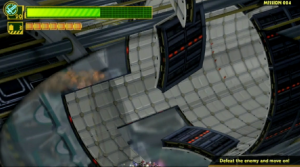
On the flip side, The Wonderful 101 doesn’t do a whole lot wrong with its atmosphere. Visuals are very crisp and colorful, the music is extremely well done and very fitting, voice acting is mostly great, if a little generic at times, and the story serves as a nice backdrop in front of which these very lively characters interact. Following in the footsteps of its stylistic predecessors, the game won’t offer deep introspection or conscientious dialogue, but it will make you laugh, and it is those moments of laughter that can serve to pacify the aforementioned instances of frustration.
Sometimes the humor comes in the form of absurdity (par for the course as far as Platinum Games is concerned), some of it comes from subtle word usage (e.g. Earth’s defense shield is called “Margarita”, enemies are named “GEATHJERKS” just so characters can call them “jerks” throughout the storyline), and some of it comes from small stylistic motifs, such as the way Wonder Red (effectively the protagonist) refers to people by their full, lengthy titles each time he meets them. This becomes particularly funny sometimes, because none of the other characters point out how silly it is that he does this– they remain stoic through his antics, as though this is normalcy.
And when that humor is combined with that atmosphere, and those two things are then put in front of a story that knows when to stay out of the way and when to pop back in, you get something very special. Each time Wonder Red says “Team, unite up!” and the rest of the Wonderful 100 shout “Roger!”, you’ll get little goosebumps. Each time Wonder Green pokes fun at Wonder Blue, you’ll chuckle even though it’s not really that funny. Each time Wonder White goes on one of his long Japanese proverb stints, you won’t be able to help but smile. The Wonderful 100 are not a well-rounded or realistic bunch of characters, but they’re all the better for it– assuming the style is up your alley, of course.
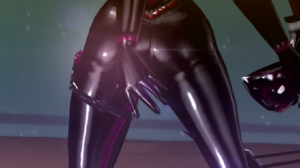
Still, even great characters and plenty of funny dialogue can get old if the experience is stretched out for too long, and The Wonderful 101 does suffer from a mild case of overstaying its welcome. It will take the average player about 10 to 12 hours to complete, which is fine in concept, but the execution ends up feeling more like a tight and focused 8 hour game stretched to 10 hours, rather than a tight and focused 10 or 12 hour game. There’s not a ton of filler, but there’s enough to make certain sections feel somewhat monotonous, particularly the seventh “Operation” in the game that– if it weren’t for a hilarious ending– could have been cut out entirely.
Speaking of things that could be cut out entirely, there are a lot of sections in The Wonderful 101 that switch from the traditional isometric gameplay to a completely new genre. Often times it’ll be a scrolling shooter for when you need to control your big spaceship (either Star Fox 64 style or Zaxxon style), but other times you’ll go through Dig-Dug-esque sections, or on-rails sections somewhat akin to Sonic 2’s bonus stages where dodging is key. There are even a few sections that pay tribute to a lesser-loved Nintendo franchise, but I won’t spoil those because they’re very cool.
These intermediary stages come at pretty regular intervals, and they are best described as “unapologetically dull”. Juxtaposed against the core gameplay– which is extremely deep and well-developed– a button-mashing scrolling shooter where there’s a stark lack of depth comes across as lazy and poorly designed, especially because these sections aren’t even good representations of the genres they’re trying to copy; they’re just cursory shifts in gameplay for the sake of trying add pacing, and– with perhaps four exceptions of the 10+ times this occurs– they end up working against the vision of the rest of the game rather than with it. The idea is tried-and-true, but the execution here is severely lacking.
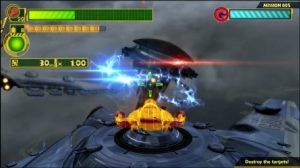
Though it was already mentioned in passing, I feel that The Wonderful 101’s soundtrack deserves its own brief paragraph for how impressive it is. Full of just as much grandeur and vibrancy as the rest of the game’s atmospheric elements, the score (composed by Hiroshi Yamaguchi, Akira Takizawa, Hitomi Kurokawa) bests the vast majority of the other fully orchestrated soundtracks that are out there now, and if it’s any indication of what’s to come from Platinum in the future we are in for a real treat.
And I suppose all of those kind words apply to the entire game’s presentation, from the audio design to the visuals to the dialogue– it’s hard to overstate just how funny, lovable, and vibrant this game is from head to toe. By the end of it (and what an end it is!), all of my frustrations with the camera, the inane shifts in gameplay, and the unfair fights had melted away, and I was left with nothing but smiles and goosebumps. This is exactly the sort of project I’m very happy to see Nintendo put their money behind, because even when it doesn’t turn out perfect, we get something unabashedly memorable.

Buy this game if…
… games with unapologetically unique aesthetics and fast-paced action gameplay are your cup of tea. Fans of Phoenix Wright‘s caricatured characters and Bayonetta‘s action (combined) will feel right at home here, if they’re willing to forgive some irritating technical failings.
Don’t but this game if…
… you strongly prefer your games to be polished and technically-sound from start to finish, you haven’t the taste for this sort of aesthetic, or you haven’t spent much time with games that push your reflexes and visual acuity. You will need a fair bit of dexterity to get the most out of The Wonderful 101.
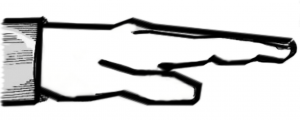
Want to participate in more NintendoEverything goodness?
Try our Facebook page!
Or our Twitter page!